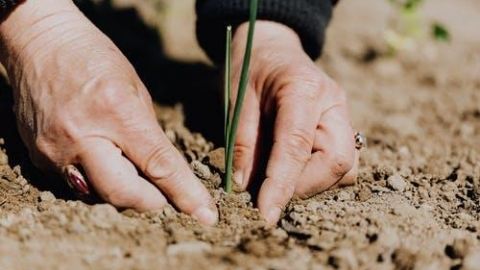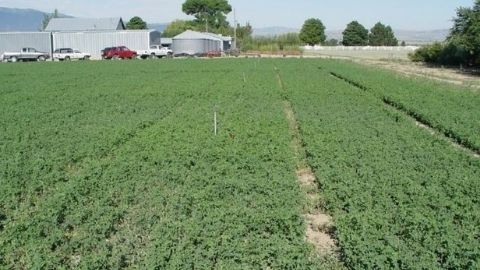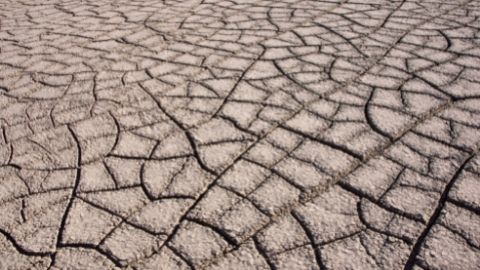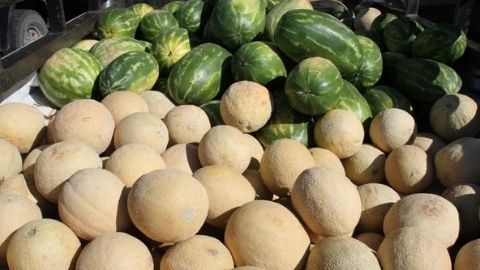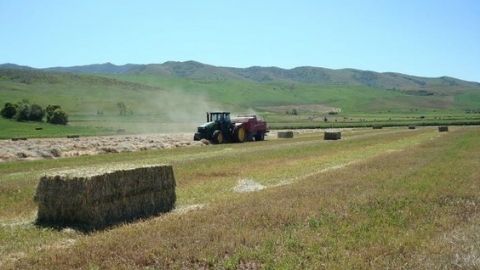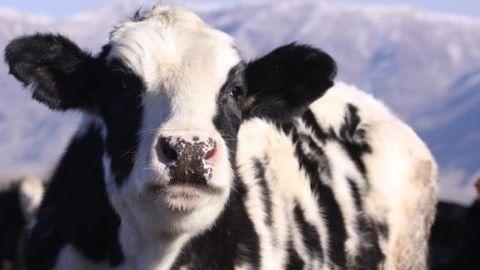Economic Impacts of Drought in Utah: Uintah and Ouray Reservation
Introduction
Drought negatively impacts agricultural productivity, often causing reduced yields, damage to pasture/range, and reduced plant growth (e.g., Hatfield et al., 2011; Kuwayama et al., 2019). Droughts are particularly concerning for Native American reservations in the arid Western United States, as agricultural production on the reservations provides an important economic base (Deol & Colby, 2018). Close cultural and economic ties to natural resources, geographic remoteness, and economic challenges render Indian reservations very vulnerable to climate change impacts (U.S. Global Change Research Program, 2014). Sustaining agricultural production on tribal lands will become progressively more challenging in the future due to decreased water availability, extended droughts, and changes in precipitation amounts and timing.
The objective of this fact sheet is to illustrate the economic impacts of drought on agriculture and the economy of the Uintah and Ouray Reservation in Utah. Utah is the second driest state in the United States, with average yearly precipitation of 13.34 inches, and 65% of the state experienced abnormally dry conditions over the past 20 years. As shown in Table 1, poverty and unemployment levels, as well as median household income on the Uintah and Ouray Reservation, are close to the United States average. Also, the share of employment in agriculture and related industries, including mining, is unusually high when compared to the United States average. In fact, intensive oil and natural gas extraction in the region likely contributes to improved economic conditions on the reservation. The reservation counties (Duchesne, Grand, and Uintah) are jointly responsible for 85% and 79% of total oil and gas extraction in Utah (Utah Department of Natural Resources – Division of Oil, Gas, and Mining, 2019).
Table 1 - Selected Economic Indicators (2018)
| Geographic Area | Population Below Poverty Level (%) | Employment in Agriculture, Forestry, Fishing/Hunting, and Mining (%) | Unemployment Rate (%) | Median Household Income ($) |
|---|---|---|---|---|
| Uintah and Ouray | 14.5 | 21.4 | 7.7 | 63,115 |
| United States | 11.8 | 1.8 | 5.9 | 64,324 |
Source. Data from U.S. Census Bureau (2020).
Cattle production represents 21% of all agricultural sales in Utah, and hence, it’s the most important agricultural sector. Hay/forage crops (all irrigated) represent 15% of total agricultural sales in Utah (USDA NASS, 2019). Cattle and hay/forage production on the reservation counties constitute 13% and 16%, respectively, of all acres used for similar production in Utah (USDA NASS, 2020). Hence, these counties contribute significantly to agricultural production in Utah. Table 2 provides 2017 cattle inventory and hay production in acres on the reservation.
Table 2 - Estimated Cattle Inventory (Head) and Hay Production (Acres)
| Reservation | Counties (Reservation % Share of County Area) | Cattle Inventory | Hay Production |
|---|---|---|---|
| Uintah and Ouray Reservation | Duchesne (89%), Grand (9%), Uintah (64%), Wasatch (53%) | 73,900 | 52,000 |
Note. Values calculated using cattle inventory and hay production data by county, reservation share (USDA NASS, 2020).
Calculating Economic Impacts
We used cattle inventory (head) and hay yield (tons/acre) data from the United States Department of Agriculture (USDA) National Agricultural Statistical Service (NASS). Precise cattle inventory and hay production data is not available for the Uintah and Ouray Reservation, so values were estimated using available county-level data, reservation share only. Data spanned from 1981 to 2016.
To measure drought, we used the Palmer Drought Severity Index (PDSI) data from the Center for Disease Control and Prevention (CDC), provided by the Cooperative Institute for Climate and Satellites – North Carolina (CICS-NC). PDSI values were compiled using temperature and precipitation data. PDSI can range from -10 to 10, but typically -4 to 4, where 0 represents normal conditions and negative/positive values represent drier/wetter conditions.
First, we applied panel data analysis to examine how drought impacts cattle inventory and hay yields. We then used the resulting regression estimates to calculate cattle and hay production losses under defined drought scenarios. Finally, we estimated the dollar value of cattle and hay production losses for each reservation, which represents the direct impacts of drought. These were used to determine total economic impacts (losses) to each reservation. Total economic impacts include (1) direct impacts (e.g., losses in cattle and hay sectors); (2) indirect impacts (e.g., losses in related sectors, which either sell inputs to the cattle and hay sectors, such as feed, seeds, labor, and veterinary services, or purchase output of cattle and hay sectors, such as food processing); and (3) induced impacts (e.g., losses due to reduced household income and spending throughout the economy, as well as reduced tax revenues).
Drought Impacts on Cattle Inventory and Hay Yields
The impacts of PDSI (drought severity), drought duration (years), and wet periods (years) were used to estimate the impacts of drought on cattle inventory and hay yields. Results show that drought affects cattle inventory and hay yields significantly, but differently.
First, drought negatively affects cattle inventory and hay yield during the year that conditions become drier. Specifically, a decrease in PDSI by 1 unit (drier conditions) results in a 0.3% decrease in cattle inventory and a 0.4% decrease in hay yields in the first year of drought. Drought also has a long-term negative impact on cattle inventory but no long-term impact on hay yields. Specifically, a one-year duration of very dry conditions (that is, PDSI below -1.9) results in a 1.87% decrease in cattle inventory in the following year. Cattle producers are impacted by drought through reduced feed availability and/or higher feed costs, which may motivate them to cull or sell cattle earlier than planned. The reduction of breeding stock affects post-drought cattle inventory (Shrum et al., 2018).
Direct and Total Economic Impacts of Drought on Tribal Communities
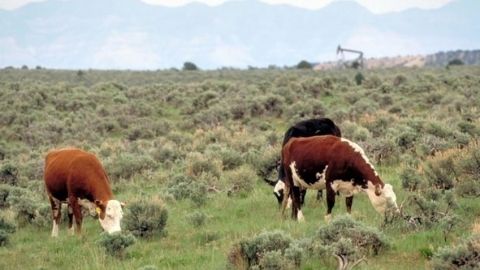 Two assumed drought scenarios and their impacts on cattle inventory and hay yields in Table 3 were used to estimate the direct and total economic impacts of drought. Direct losses of drought affecting the cattle sector are $3.243 million, and total economic impacts due to cattle sector losses are $8.243 million on the Uintah and Ouray Reservation (see Table 4).
Two assumed drought scenarios and their impacts on cattle inventory and hay yields in Table 3 were used to estimate the direct and total economic impacts of drought. Direct losses of drought affecting the cattle sector are $3.243 million, and total economic impacts due to cattle sector losses are $8.243 million on the Uintah and Ouray Reservation (see Table 4).
We calculated the direct and total impacts with the assumption that very dry conditions (PDSI less than -1.9) last for two years, causing a 3.72% decrease in cattle inventory, but the impacts can be scaled up or down. For example, for a one-year drought, the estimated impacts would be half.
Table 3 - Drought Scenarios and Impacts on Cattle Inventory and Hay Yields
| Product | Scenario Description | Total Impact |
|---|---|---|
| Cattle | Two-year drought: PDSI decreases below -1.9 and stays the same for two years, then increases back to the pre-drought level. | -3.72% |
| Hay | PDSI decreases by 2 units. | -0.87% |
Table 4 - Economic Impacts of Drought for the Cattle and Hay Sectors (in Million $)
| Product | Direct Impacts | Indirect Impacts | Induced Impacts | Total Impacts |
|---|---|---|---|---|
| Cattle | 3.243 | 4.098 | 0.902 | 8.243 |
| Hay | 0.257 | 0.303 | 0.133 | 0.693 |
The direct losses due to drought for the hay sector are $0.257 million, and the resulting total economic impacts are $0.693 million on the Uintah and Ouray Reservation (see Table 4). Again, we calculated direct and total impacts with the assumption that PDSI decreases by 2 units, causing an 0.87% decrease of hay yields, but the impacts can be scaled up or down. For example, for PDSI decrease by 1 unit, the estimated impacts would be half.
Conclusions
Reductions in cattle and hay production due to drought result in reduced economic activity in related sectors and significant economic losses for the Uintah and Ouray Reservation. Calculated direct and total economic impacts are larger for the cattle sector than for the hay sector since drought affects cattle production in the long term, and the cattle production is more prominent on the reservation. Although estimated disruptions in hay production due to drought are smaller, reduced hay availability may have large negative consequences for cattle production if it depends heavily on hay for feed as a result of reduced grazing efficiency.
In conclusion, droughts represent a threat to tribal economies, where agriculture plays an important role. These results highlight the need for education and policy to improve the ability of reservation agricultural operations to prepare for and respond to drought.
References
- Deol, S., & Colby, B. (2018). Tribal economies: Water settlements, agriculture, and gaming in the western U.S. Journal of Contemporary Water Research & Education, 163(1), 45–63.
- Hatfield, J. L., Boote, K. J., Kimball, B. A., Ziska, L. H., Izaurralde, R. C., Ort, D., Thomson, A. 4 M., & Wolfe, D. (2011). Climate impacts on agriculture: Implications for crop production. Agronomy Journal, 103(2), 351–370.
- Kuwayama, Y., Thompson, A., Bernknopf, R., Zaitchik, B., & Vail, P. (2019). Estimating the impact of drought on agriculture using the U.S. Drought Monitor. American Journal of Agricultural Economics, 101(1), 193–210.
- Shrum, T. R., Travis, W. R., Williams, T. M., & Lih, E. (2018). Managing climate risks on the ranch with limited drought information. Climate Risk Management, 20, 11–26.
- U.S. Census Bureau. (2020). 2014–2018 American community survey 5-year estimates [Data set]. https://www.census.gov/tribal/
- U.S. Global Change Research Program. (2014). National climate assessment. http://nca2014.globalchange.gov/report
- USDA NASS. (2019). 2017 Census of agriculture. https://www.nass.usda.gov/Publications/AgCensus/2017/Full_Report/Volume_1,_Chapter_1_US/usv1.pdf
- USDA NASS. (2020). Quick stats [Data set]. https://quickstats.nass.usda.gov/
- Utah Department of Natural Resources – Division of Oil, Gas, and Mining. (2019). Annual production summary – counties. https://oilgas.ogm.utah.gov/oilgasweb/live-data-search/lds-prod/prod-by-cnty-lu.xhtml
Date Published: December 2020
Authors
Tatiana Drugova, Postdoctoral Fellow, Department of Applied Economics; Kynda Curtis, Professor and Extension Specialist, Department of Applied Economics; Man-Keun Kim, Associate Professor, Department of Applied Economics
Related Research






